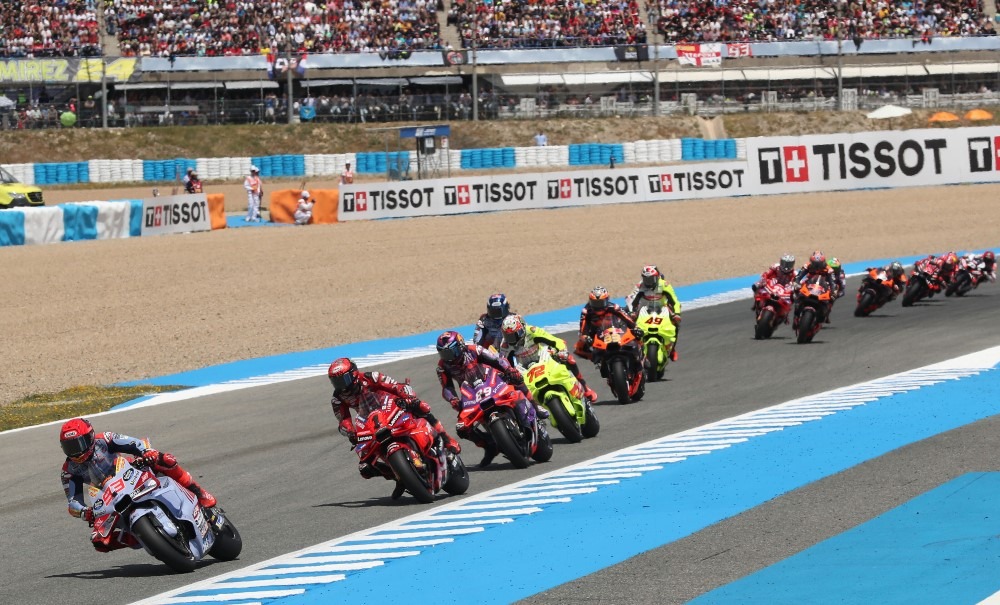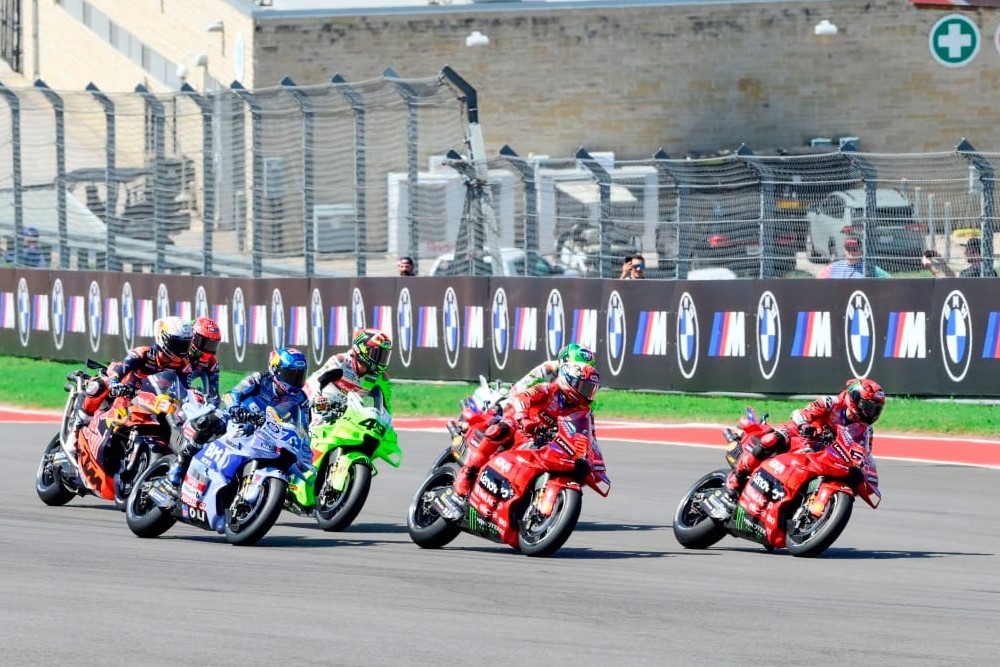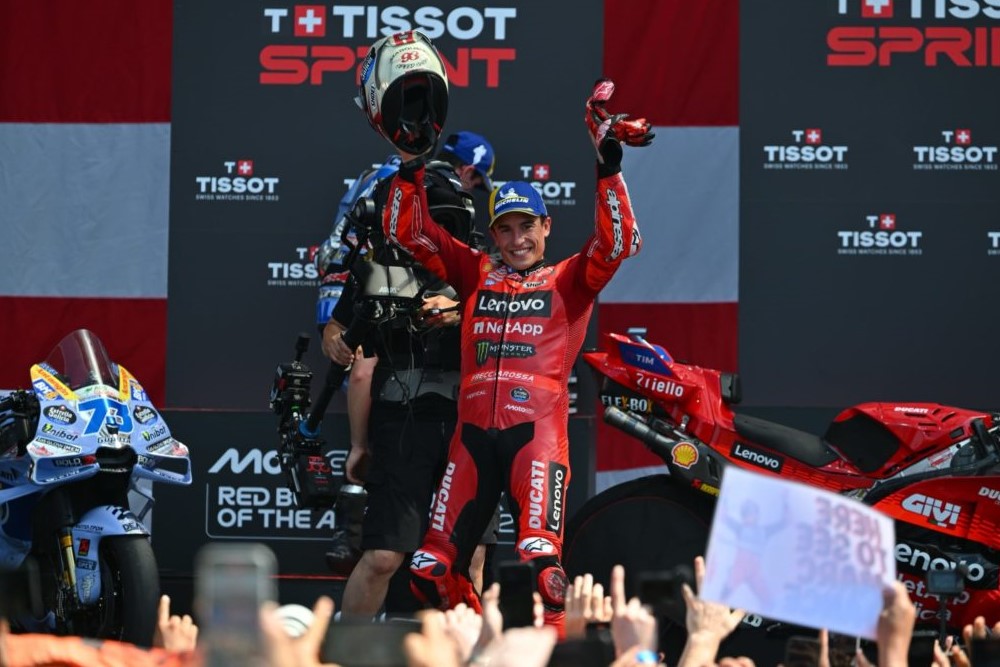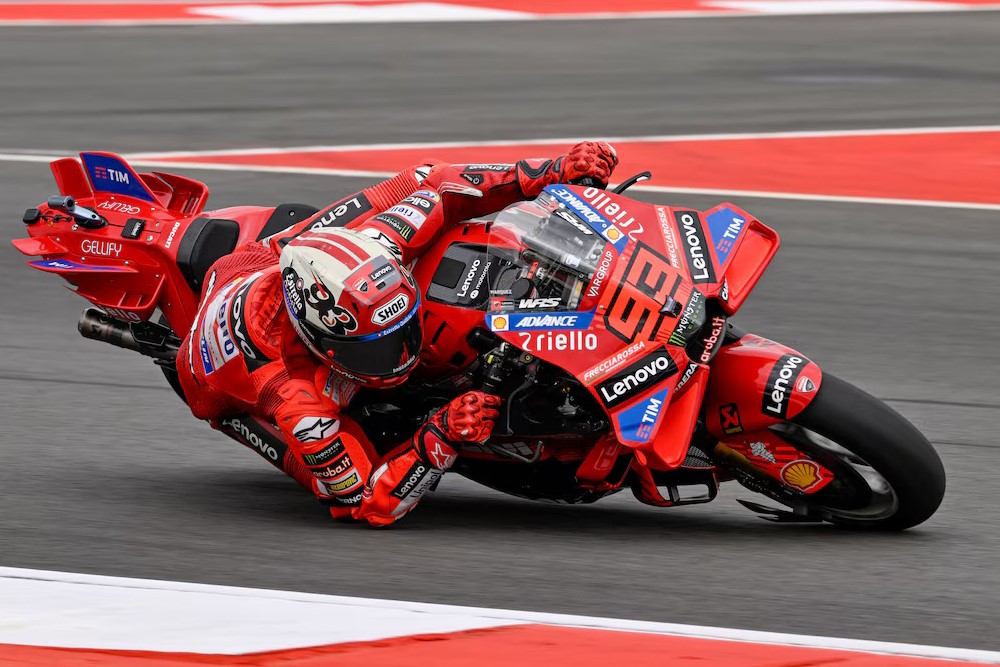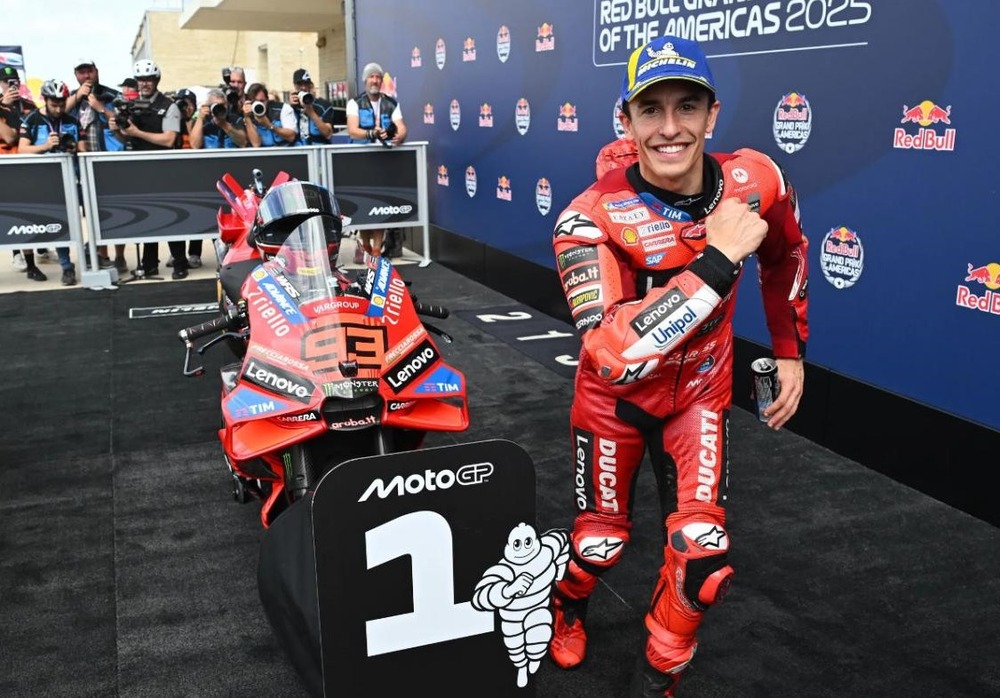MotoGP has announced a significant revision to its technical regulations alongside the introduction of 850cc engines effective from the 2027 season.
MotoGP has revealed its revised 2027 regulations, the most notable of which is a reduction in engine capacity from 1000cc to 850cc in an effort to slow down motorcycles and improve safety on conventional circuits.
MotoGP’s current four-stroke 1000cc engines will be reduced to 850cc, as was first revealed by Motorsport.com in November. This reduction is a major component of the 2027 regulations that the series is developing in collaboration with manufacturers.
The entire 2027 regulations set was certified on Monday by MotoGP’s Grand Prix Commission.
After switching from the much-maligned 800cc regulations in 2007, MotoGP has been using 1000cc engines since 2012. Before that, engine capacity was 990cc from the start of the new four-stroke MotoGP era in 2002 to 2006 which came after the two-stroke 500cc.
However, the move had been attempted previously with devastating results due to the high turning speed and highsiding vulnerability of the 800cc era bikes therefore as the series evolves greater focus needs to be given to this issue.
This can be remedied by changes to the gearbox regulations that will decrease the number of allowed gears from 24 to 16 resulting to the fast-revving, high corner speed design becoming less desirable.
While the cylinder bore will correspondingly decrease from 81mm to 75mm, there will be no further rule change – therefore MotoGP bikes will all remain as four-cylinder machines, putting to rest any chance of a return to the true prototype engines of the series’ initial era.
The second significant rule change covers ride-height devices, wherein an unanticipated outright ban will be put in place, including any devices used for race-starts. Originally designed to aid in controlling wheelies off the line, these devices have since developed into systems that the rider activates as they accelerate off the corners.
These devices, which were used at the front and rear until the front ones were banned have been identified as a major factor in the decline in racing quality given that they basically lessen the dependence of riders on skill when exiting corners. That implies that every corner has become easy to maneuver, which reduces the possibility of making a difference in performance.
Initially, it was believed that the riders themselves, who saw the gadgets as important safety assets off the line, would insist on keeping the race start devices.
The final change is that manufacturers will no longer have the freedom to integrate any aerodynamic designs into their bikes. The maximum width at the back will drop from 1250mm to 1150mm, the front fairing aero body’s maximum allowable width will drop from 600mm to 550mm, and the bike’s front nose will be moved backwards by 50mm.
More importantly, the bike’s rear will now be a component of the machine’s homologated aero package, which means it can only be modified once and needs to be set in place before the season begins. This is a significant departure from the existing regulations, which solely apply aero homologation to the bikes’ front and sides, giving manufacturers carte blanche to modify the rear recently.
Other slight rule changes will be made as well in order to adhere to previous trends. Specifically, the maximum number of engines allowable in a season will be reduced to six, the fuel capacity will be cut to 20 liters, and the overall weight will be lowered by 4 kg to 153 kg to suit the new engines.
The concession system will also see some minor adjustments in order to balance the entry of new bikes. All factories that will take part in 2026 MotoGP will be reassigned to band B of the new regulations, which currently remains unoccupied by any manufacturer.
This would result in the demotion of Ducati from band A, reclassification of KTM and Aprilia from band C, the moving of Honda and Yamaha from band D, and the restriction of mid-season engine development to three wildcards per manufacturer. Additionally, factories would only be permitted to test with their assigned test riders, not their race team.
But factories, most notably BMW, that haven’t competed in 2026 will get started in band D. Six wildcards would be granted, along with unfettered testing with their race team and an unlimited number of engine upgrades along with additional aerodynamics tweaks.
BMW has not ruled out the possibility of joining MotoGP in the coming years, with the 2027 rule change seen as a gateway for the German brand. However, it has yet to commit and said it had no part in the 2027 regulations talk.

